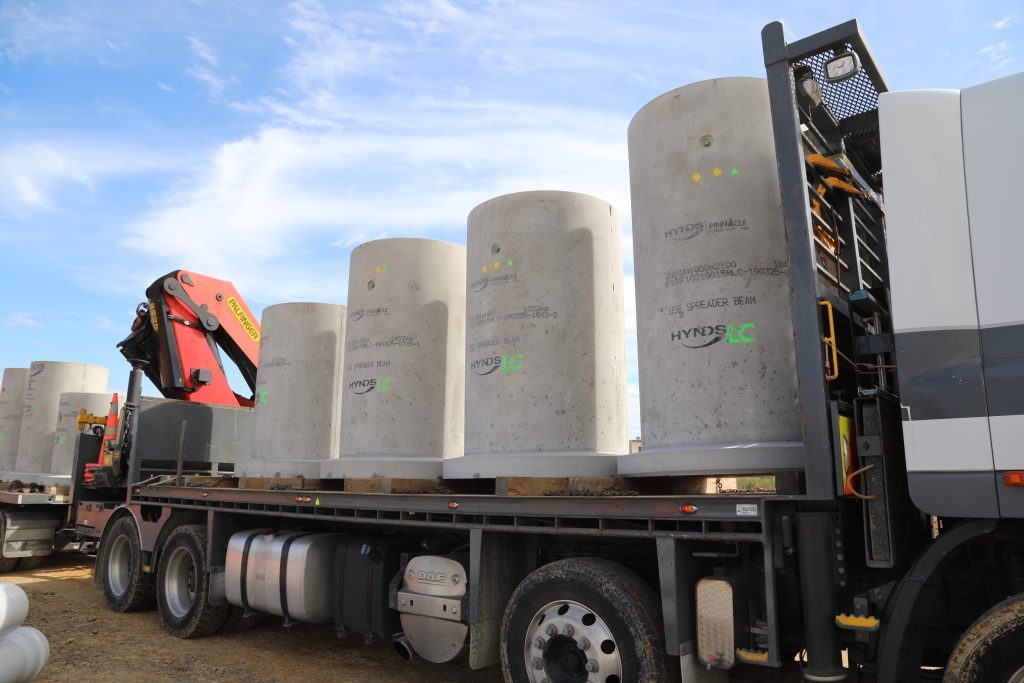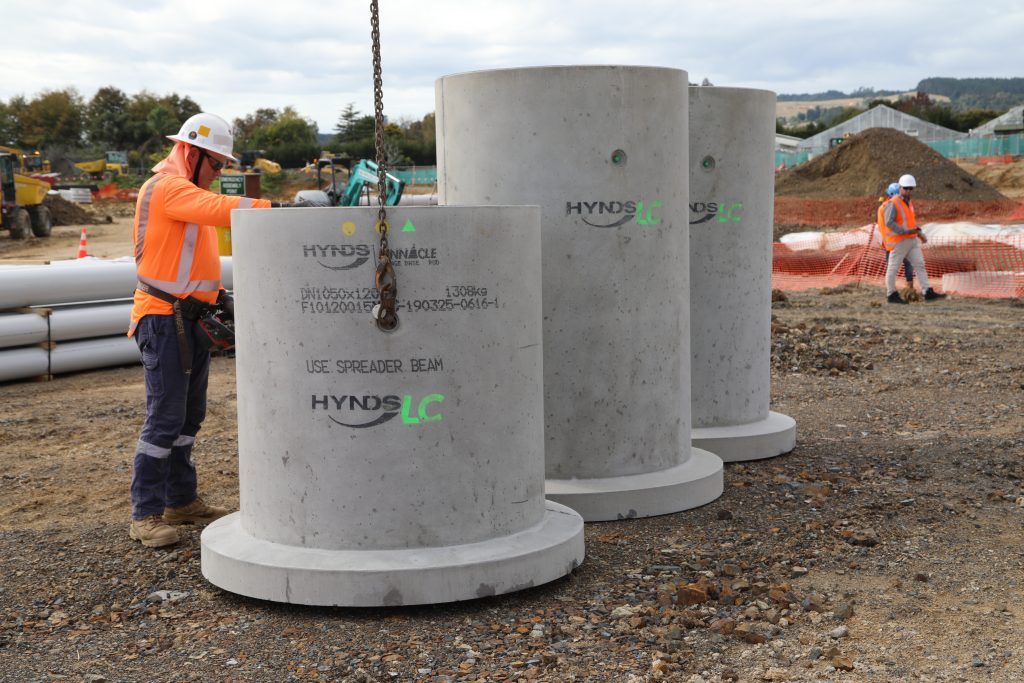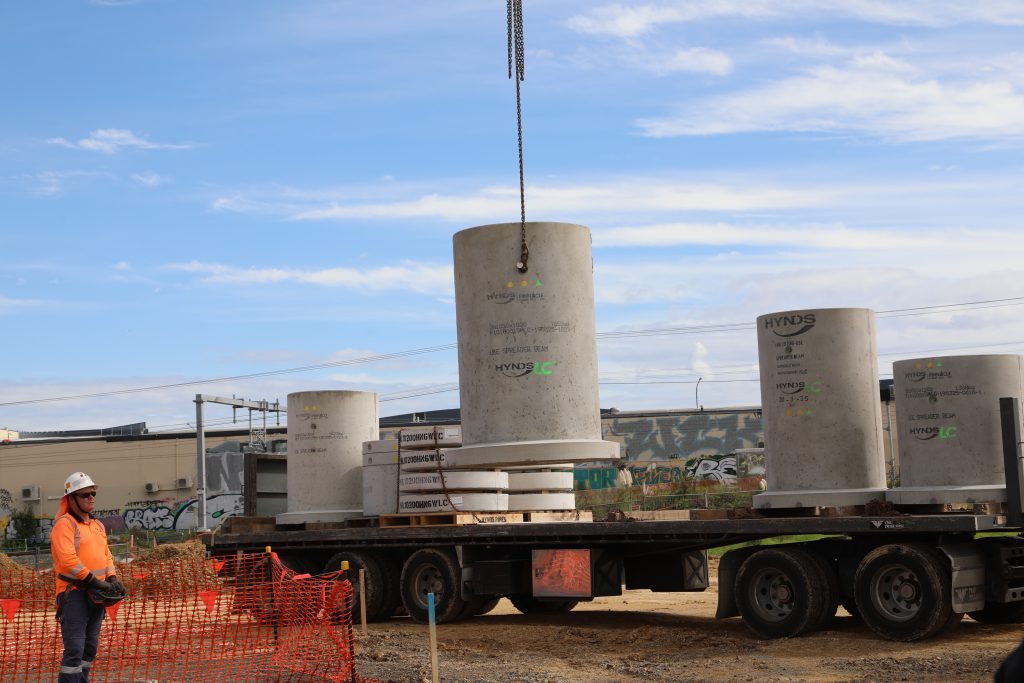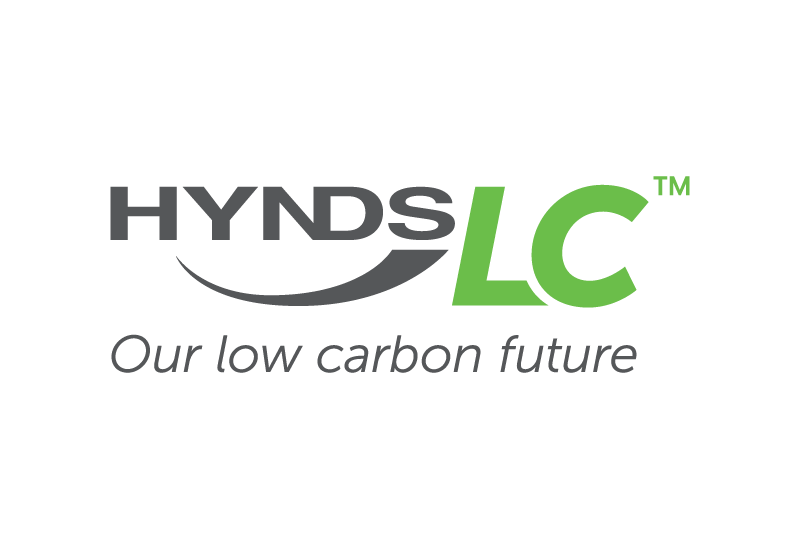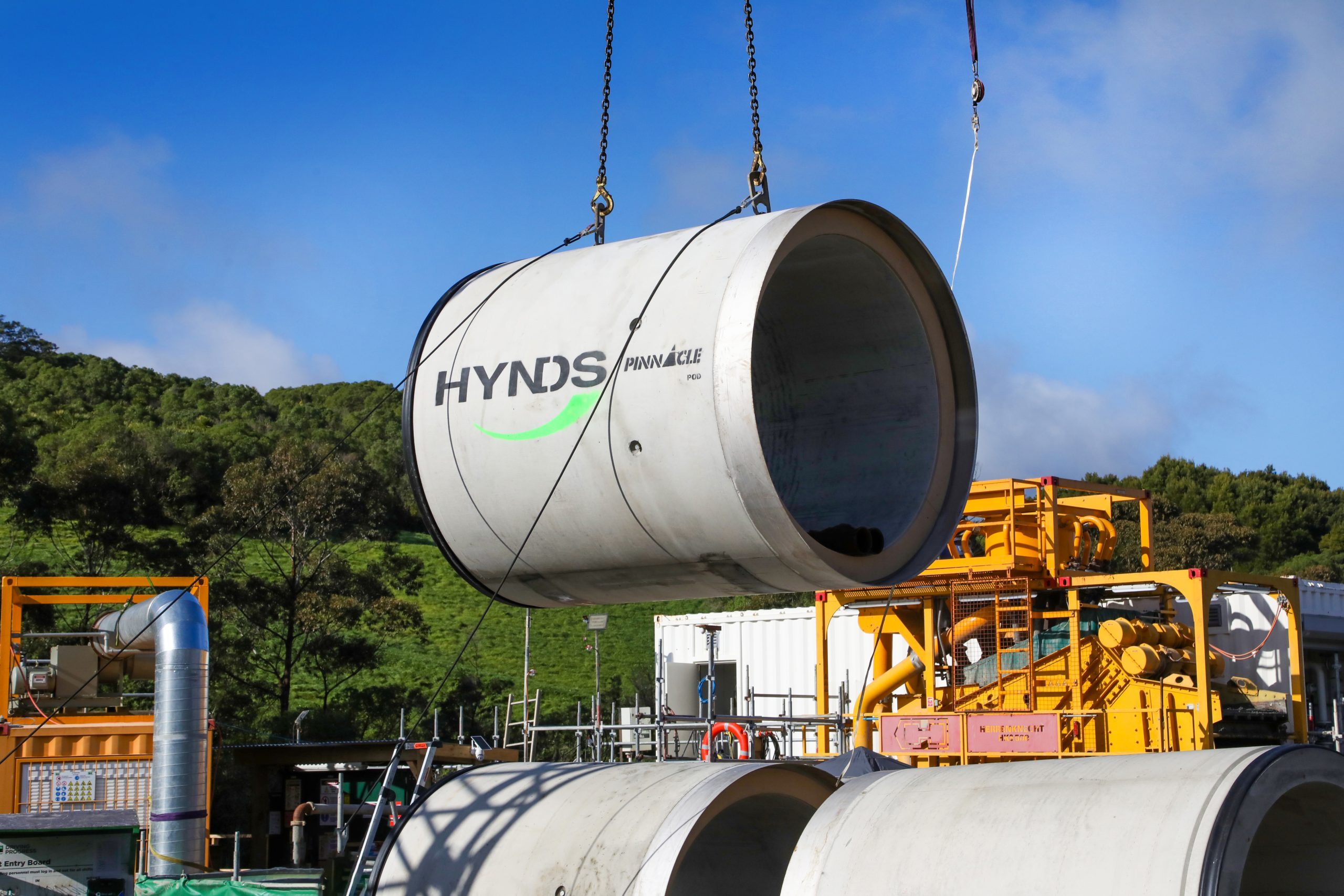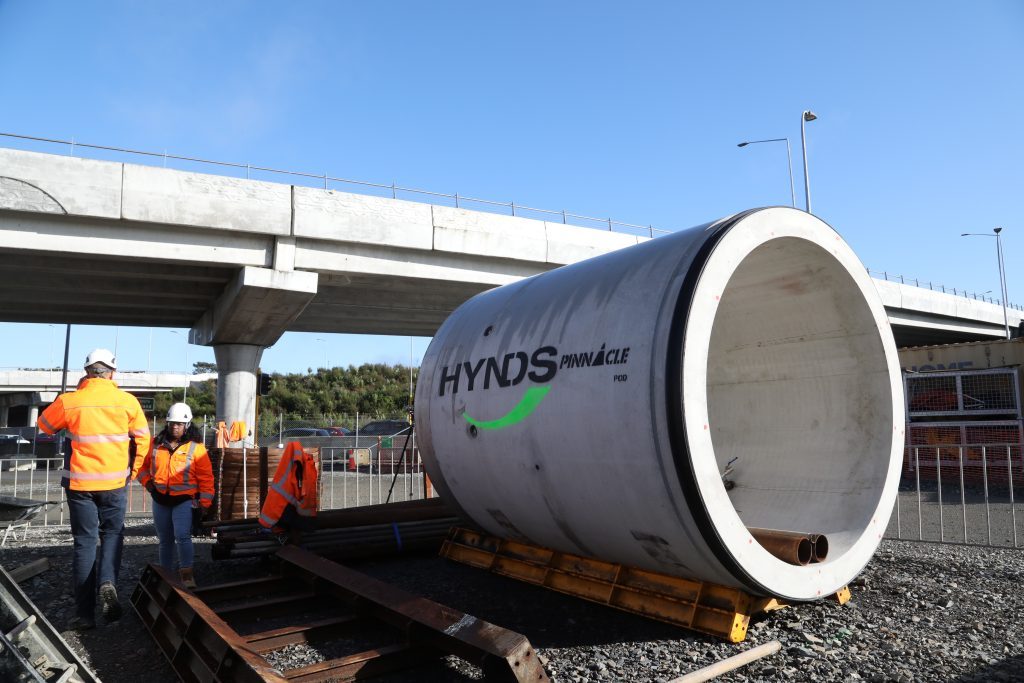HEB Construction and Hynds have come together to support KiwiRail’s transition to net zero carbon by 2050 through the first use of lower carbon manholes in KiwiRail’s network.
KiwiRail is currently working with partner agencies Auckland Transport and Waka Kotahi to create a cohesive transport network in South Auckland. Over the next 30 years, an extra 130,000 people are expected to call South Auckland home. To prepare for that future growth, the government has provided funding for three new railway stations between Papakura and Pukekohe.
As part of KiwiRail’s drive to reduce the embodied carbon of their capital projects, they challenged contractors working on the Drury Train Station to incorporate lower carbon solutions. HEB Construction saw this as the perfect opportunity to utilise the lower carbon precast concrete range from Hynds Pipe Systems.
“We are thrilled to be the first site to implement Hynds lower carbon manholes in a KiwiRail project, marking a significant step towards increased sustainability. This innovative solution not only benefits the environment but also aligns with our customers’ goals. Together, we are paving the way for a greener future” says Francois van Rooyen, HEB Construction Project Manager.
The HyndsLC® range of lower carbon precast concrete products enables contractors and asset owners to meet their sustainability requirements without having to compromise on quality and durability. The embodied carbon reductions are achieved through increased use of cement replacements (using fly ash and ground granulated blast furnace slag) and substituting high carbon components with lower carbon suppliers.
“While the HyndsLC® range does cost us more to manufacture, due to the cost of materials and increased manufacturing time, we are committed to supporting our customers sustainability targets and have supplied the lower carbon manholes at no additional cost” says Ben Scott, Hynds Senior Account Manager.
The HyndsLC® range was only used for the manholes in the Drury Train Station, with future projects planning to use lower carbon concrete pipes as well. A key feature of these products is that the installation and handling processes are identical to Hynds standard products, allowing contractors to easily adopt these products.
“The feedback from our drainlayers is that it is no different to the standard concrete manholes so it’s good all-round. Moving forward, we will be favouring the lower carbon options over standard concrete products” adds Francois van Rooyen.
The successful use of the HyndsLC® range in this project has shown the value of suppliers, contractors and asset owners partnering together to achieve the most sustainable outcomes.
“At KiwiRail, we’re upgrading and building infrastructure across New Zealand with a strong focus on sustainability. The Drury Station project marked a significant milestone as our first to incorporate low carbon pre-cast concrete onsite. This innovation represents a major step forward—not just for this project, but for embedding low-carbon construction practices into the future of KiwiRail’s developments” says Marco Dumas, Programme Manager, Auckland Metro Programme.
“If lower carbon precast concrete products had been used for the full range of pipe and manholes at Drury Train Station, the project would have avoided over 3 tons of carbon emissions. If you expand that over all of HEB Constructions’ KiwiRail projects nationally, this represents a huge opportunity for us to collectively deliver consistent, meaningful carbon reductions” adds Ben Scott.
The Drury Railway Station is expected to be operational in 2026, alongside the Ngākōroa Railway Station and Paerātā Railway Station. Combined with the electrification of the KiwiRail network from Papakura to Pukekohe, the three new stations will make travelling by train more accessible and appealing to those living and working in the area.


